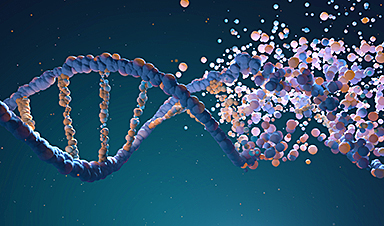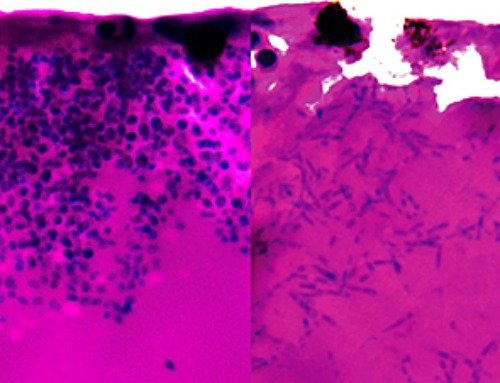Scientists testing a new method of sequencing single cells have unexpectedly changed our understanding of the rules of genetics.
The genome of a protist has revealed a seemingly unique divergence in the DNA code signaling the end of a gene, suggesting the need for further research to better understand this group of diverse organisms.
Dr. Jamie McGowan, a postdoctoral scientist at the Earlham Institute, analyzed the genome sequence of a microscopic organism – a protist – isolated from a freshwater pond at Oxford University Parks.
Unexpected Genetic Findings in Protists
However, when researchers looked at the genetic code, the protist Oligohymenophorea sp. PL0344 turned out to be a novel species with an unlikely change in how its DNA is translated into proteins.
Dr. McGowan said: "It's sheer luck we chose this protist to test our sequencing pipeline, and it just shows what's out there, highlighting just how little we know about the genetics of protists."
It is hard to make any statements about protists as a group. Most are microscopic, single-celled organisms like amoebas, algae, and diatoms, but larger multicellular protists exist – such as kelp, slime molds, and red algae.
"The definition of a protist is loose – essentially it is any eukaryotic organism which is not an animal, plant, or fungus," said Dr. McGowan. "This is obviously very general, and that's because protists are an extremely variable group.
"Some are more closely related to animals, some more closely related to plants. There are hunters and prey, parasites and hosts, swimmers, and sitters, and there are those with varied diets while others photosynthesize. Basically, we can make very few generalizations."
Ciliates and Genetic Code Variations
Oligohymenophorea sp. PL0344 is a ciliate. These swimming protists can be seen with a microscope and are found almost anywhere there is water.
Ciliates are hotspots for genetic code changes, including reassignment of one or more stop codons – the codons TAA, TAG, and TGA. In virtually all organisms, these three stop codons are used to signal the end of a gene.
Variations in the genetic code are extremely rare. Among the few variants of the genetic code reported to date, the codons TAA and TAG virtually always have the same translation, suggesting that their evolution is coupled.
"In almost every other case we know of, TAA and TAG change in tandem," explained Dr. McGowan. "When they aren't stop codons, they each specify the same amino acid."
DNA Translation Anomalies
DNA is like a blueprint of a building. It does not do anything in and of itself – it provides instructions for work to be done. In order for a gene to have an impact, the blueprint must be "read" and then built into a molecule which has a physical effect.
For DNA to be read, it is first transcribed into an RNA copy. This copy is taken to another area of the cell where it is translated into amino acids, which are combined to make a three-dimensional molecule. The translation process starts at the DNA start codon (ATG) and finishes at a stop codon (normally TAA, TAG, or TGA).
In Oligohymenophorea sp. PL0344, only TGA functions as a stop codon – although Dr. McGowan found there are more TGA codons than expected in the ciliate's DNA, believed to compensate for the loss of the other two. Instead, TAA specifies lysine and TAG specifies glutamic acid.
"This is extremely unusual," Dr. McGowan said. "We're not aware of any other case where these stop codons are linked to two different amino acids. It breaks some of the rules we thought we knew about gene translation – these two codons were thought to be coupled.
"Scientists attempt to engineer new genetic codes – but they are also out there in nature. There are fascinating things we can find, if we look for them.
"Or, in this case, when we are not looking for them."
Reference: "Identification of a non-canonical ciliate nuclear genetic code where UAA and UAG code for different amino acids" by Jamie McGowan, Estelle S. Kilias, Elisabet Alacid, James Lipscombe, Benjamin H. Jenkins, Karim Gharbi, Gemy G. Kaithakottil, Iain C. Macaulay, Seanna McTaggart, Sally D. Warring, Thomas A. Richards, Neil Hall and David Swarbreck, 5 October 2023, PLOS Genetics.
DOI: 10.1371/journal.pgen.1010913
This research was funded by the Wellcome Trust as part of the Darwin Tree of Life Project, and supported by the Earlham Institute's core funding from the Biotechnology and Biological Sciences Research Council (BBSRC), part of UKRI.
News
Scientists Unlock a New Way to Hear the Brain’s Hidden Language
Scientists can finally hear the brain’s quietest messages—unlocking the hidden code behind how neurons think, decide, and remember. Scientists have created a new protein that can capture the incoming chemical signals received by brain [...]
Does being infected or vaccinated first influence COVID-19 immunity?
A new study analyzing the immune response to COVID-19 in a Catalan cohort of health workers sheds light on an important question: does it matter whether a person was first infected or first vaccinated? [...]
We May Never Know if AI Is Conscious, Says Cambridge Philosopher
As claims about conscious AI grow louder, a Cambridge philosopher argues that we lack the evidence to know whether machines can truly be conscious, let alone morally significant. A philosopher at the University of [...]
AI Helped Scientists Stop a Virus With One Tiny Change
Using AI, researchers identified one tiny molecular interaction that viruses need to infect cells. Disrupting it stopped the virus before infection could begin. Washington State University scientists have uncovered a method to interfere with a key [...]
Deadly Hospital Fungus May Finally Have a Weakness
A deadly, drug-resistant hospital fungus may finally have a weakness—and scientists think they’ve found it. Researchers have identified a genetic process that could open the door to new treatments for a dangerous fungal infection [...]
Fever-Proof Bird Flu Variant Could Fuel the Next Pandemic
Bird flu viruses present a significant risk to humans because they can continue replicating at temperatures higher than a typical fever. Fever is one of the body’s main tools for slowing or stopping viral [...]
What could the future of nanoscience look like?
Society has a lot to thank for nanoscience. From improved health monitoring to reducing the size of electronics, scientists’ ability to delve deeper and better understand chemistry at the nanoscale has opened up numerous [...]
Scientists Melt Cancer’s Hidden “Power Hubs” and Stop Tumor Growth
Researchers discovered that in a rare kidney cancer, RNA builds droplet-like hubs that act as growth control centers inside tumor cells. By engineering a molecular switch to dissolve these hubs, they were able to halt cancer [...]
Platelet-inspired nanoparticles could improve treatment of inflammatory diseases
Scientists have developed platelet-inspired nanoparticles that deliver anti-inflammatory drugs directly to brain-computer interface implants, doubling their effectiveness. Scientists have found a way to improve the performance of brain-computer interface (BCI) electrodes by delivering anti-inflammatory drugs directly [...]
After 150 years, a new chapter in cancer therapy is finally beginning
For decades, researchers have been looking for ways to destroy cancer cells in a targeted manner without further weakening the body. But for many patients whose immune system is severely impaired by chemotherapy or radiation, [...]
Older chemical libraries show promise for fighting resistant strains of COVID-19 virus
SARS‑CoV‑2, the virus that causes COVID-19, continues to mutate, with some newer strains becoming less responsive to current antiviral treatments like Paxlovid. Now, University of California San Diego scientists and an international team of [...]
Lower doses of immunotherapy for skin cancer give better results, study suggests
According to a new study, lower doses of approved immunotherapy for malignant melanoma can give better results against tumors, while reducing side effects. This is reported by researchers at Karolinska Institutet in the Journal of the National [...]
Researchers highlight five pathways through which microplastics can harm the brain
Microplastics could be fueling neurodegenerative diseases like Alzheimer's and Parkinson's, with a new study highlighting five ways microplastics can trigger inflammation and damage in the brain. More than 57 million people live with dementia, [...]
Tiny Metal Nanodots Obliterate Cancer Cells While Largely Sparing Healthy Tissue
Scientists have developed tiny metal-oxide particles that push cancer cells past their stress limits while sparing healthy tissue. An international team led by RMIT University has developed tiny particles called nanodots, crafted from a metallic compound, [...]
Gold Nanoclusters Could Supercharge Quantum Computers
Researchers found that gold “super atoms” can behave like the atoms in top-tier quantum systems—only far easier to scale. These tiny clusters can be customized at the molecular level, offering a powerful, tunable foundation [...]
A single shot of HPV vaccine may be enough to fight cervical cancer, study finds
WASHINGTON -- A single HPV vaccination appears just as effective as two doses at preventing the viral infection that causes cervical cancer, researchers reported Wednesday. HPV, or human papillomavirus, is very common and spread [...]





















